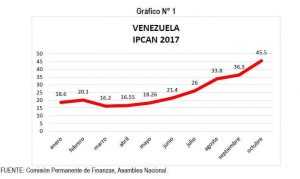 It’s considered to be a pollutant chemical (agent) the element or chemical compound which condition and physicochemical characteristics allow him to enter in contact with people, so that they can originate an adverse effect for his health. His principal routes of entry to the organism are the inhalatoria, the dermal and the digestive. They include organic and inorganic compounds.
It’s considered to be a pollutant chemical (agent) the element or chemical compound which condition and physicochemical characteristics allow him to enter in contact with people, so that they can originate an adverse effect for his health. His principal routes of entry to the organism are the inhalatoria, the dermal and the digestive. They include organic and inorganic compounds.
ORGANIC COMPOUNDS: it is human and animal waste, of tracks or slaughter houses, of food processing for human and animal, diverse chemical industrial products of natural origin like oils, fats, tars and dyes, and diverse chemical synthetic products like paintings, herbicides, insecticides
INORGANIC COMPOUNDS: there are diverse products dissolved in water that they come from domestic, agricultural and industrial unloads or from the erosion of the soil. The principal ones are: chlorides, sulfates, nitrates carbonates, acid waste, alkaline toxic gases dissolved in the water as the oxides of sulphur, of nitrogen, ammonia, chlorine, etc. The smoke contains solid particles formed by condensation, and they are commonly metallic oxides formed by warming in metals of high temperatures or for metals in merger. The smoke also can be formed for the volatilisation of organic solid matters or for the reaction of chemical substances.
The dew consists of liquid particles generated by the disintegration of a liquid, since in case of atomization.
GASES: the gaseous pollutants are those constituted by substances in gas condition to the ordinary temperature and pressure or as steams, which they present in gaseous state in the liquid materials. One of the most important properties of the gaseous pollutants is his aptitude to be mixed by the air. They can change his physical condition into a combination of pressure and temperature. All these chemical compounds can damage very much in the form of inhalation, absorption or consumed.
POWDERS: In the industrial hygiene the problem of the powder is one of the most important, since many powders exercise an effect of deterioration in the health of the workers; increasing the death rates for tuberculosis and the indexes of respiratory diseases.
They qualify in four big categories: – toxic particles – allergic powders – inert powders – powders fibrógenos
- Toxic Particles: those of metallic origin as: lead, cadmium, mercury, arsenic, beryllium, capable of producing a sharp or chronic poisoning.
- Allergic Powders: diverse nature capable of producing asthma, fever, dermatitis. It is possible to present in persons sensitized whereas others do not demonstrate any reaction. His action depends on the predisposition of the individual that of the particular characteristics of the powder. The pollen, powder of wood, vegetable or synthetic fibers, resins.
- Inert Powders: on having accumulated in the lungs they provoke after a long exhibition a reaction of on pulmonary load and a decrease of the respiratory capacity coal, abrasives and compounds of barium, calcium, iron and tin.
- Powders fibrogenos: for his process of biological reaction they originate a pulmonary fibrosis or evolutionary pneumoconiosis, which develop tubercular preexisting areas with extension to the heart in the advanced conditions: silica, asbestos, silicates with free quartz (talc, kaolin, feldspar) and the compounds of beryllium.
The BENZENE is used widely in the industry, in the paintings for planes, as solvents of rubbers, resins, fats and rubber; in the mixtures of fuels for engines, in the manufacture of colors of aniline, of the artificial body and of the cements of rubber, in the extraction of oils and fats, in the industry of the paintings and glazes.
Anesthesic or narcotic pollutants: they are those who act to level of the brain diminishing the activity of this one.
Pollutants sensibilizantes. They produce reactions allergic to the subjects exposed to they.
In my opinion, not only it is necessary to be careful before the presence of some chemical pollutant, but also so much physical and biological, it is suitable to act with precaution and always using EPP (as his use is corresponding).








